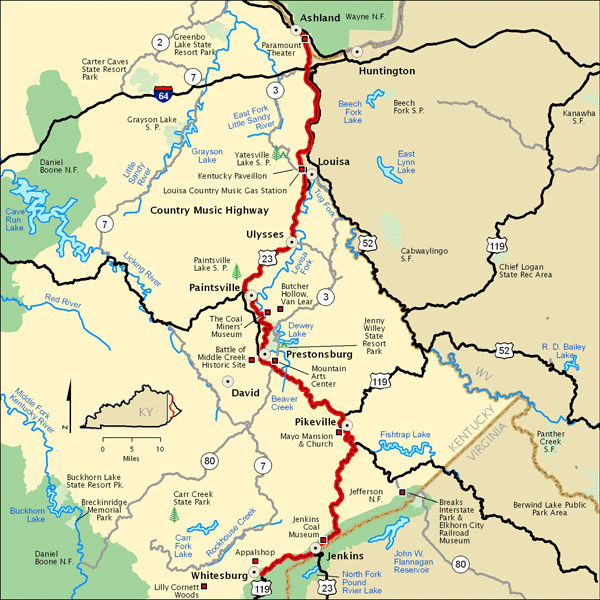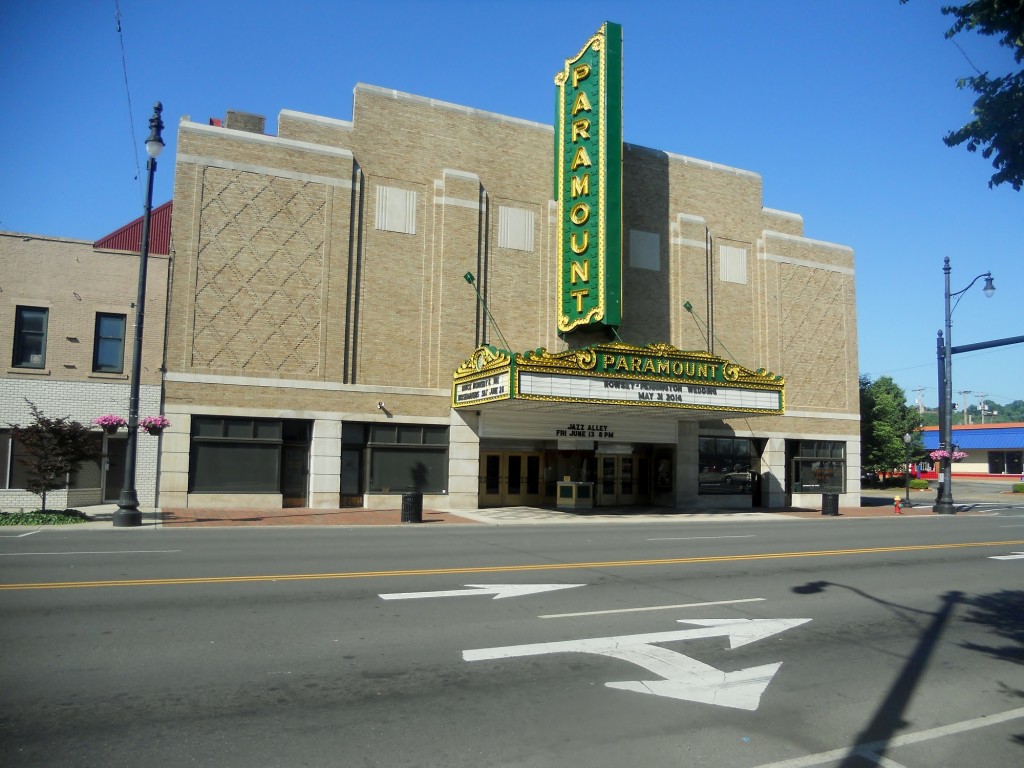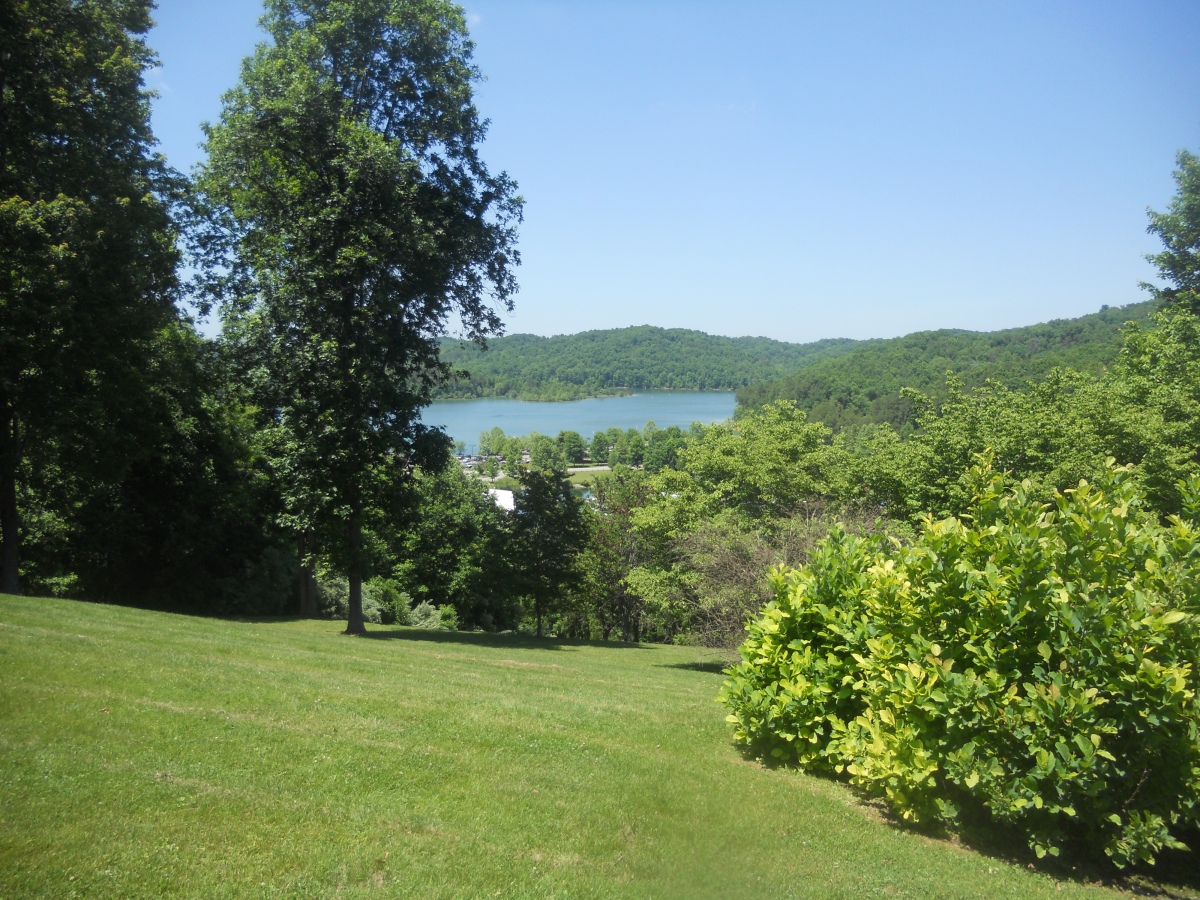Editor’s note: This is an article about a road trip taken in August 2014.
Before I left for the Czech Republic, I wanted to take another road trip. As luck led me, I took two, but this is about Kentucky. The other is a story for another day.
I love traveling in Appalachia. There’s so much that’s familiar, but the accents change dramatically. It’s like visiting a distant cousin. For a state two hours from Ohio, I know little about it; the blank slate gave me few expectations.
Bad road trips are aimless. Chasing ~wanderlust~ or trying to see “the real America” is a bit inane. It’s like living for happiness; happiness is an effect from achieving or striving for something. Aiming for happiness is like trying to hold a cloud. Serendipitous moments are made, not found; you have to set up the conditions for them.
So. A close friend and I had a theme: country music and hiking. Whenever we saw something interesting, we stopped. Which led us to a restaurant that served cornbread baked with bacon grease. Rarely are surprises so wonderful.
Eastern Kentucky has U.S. 23 running through it; from Ashland to Whitesburg, the seven counties along it were the birthplaces of Ricky Skaggs, Loretta Lynn, Dwight Yoakam, Patty Loveless, and Billy Ray Cyrus, among others. Thus, 23 was rebranded as “The Country Music Highway,” a tourism effort pushed in 1994 by State Representative Hubert Collins, and designated a National Scenic Byway in 2002, thanks to lobbying from Congressman Hal Rogers.*
Despite its forced relevance, U.S. 23 has a tourist-trap-that’s-not-a-tourist-trap vibe. It’s a low-traffic road with state parks, lakes, small towns, and enough points of interest to fill a day.

Though we started in Ashland and ended in Whitesburg, it might be a better idea to reverse that. The Jenkins Coal Museum and a few other sights were closed by the time we made it south, so start early, or plan accordingly.
Ashland has a beautiful Art Deco theater, the Paramount. Built in 1931 and remodeled in 1972 (with an eye to preserving its original design), the building looks out of place with a Burger King across the street. It hosts a variety of concerts, plays, movies, and anything else that attracts a crowd.

Near Louisa, Yatesville Lake State Park has a nice lake, but it’s more of a place for locals to visit for a weekend. The few trails running through it have contradictory signage and aren’t worth the effort. If you stop in Louisa, get the (previously mentioned) cornbread at the Down Home Grill on E. Public Way. The town also has the Country Music Gas Station, so-named because of a few guitars, banjos, and signed pictures of famous singers who probably haven’t been there. Inexplicably, they have a British-style telephone booth on the property.
About 15 miles south, Paintsville has a wonderful state park and the mildly interesting U.S. 23 Country Music Highway Museum. Paintsville Lake has hiking trails around the lake; along the path, various trees have name placards for ignorant urban and rural boobs. Also, the main office has a taxidermied bear and fox, so check those out.
Another 10 miles south, near Prestonsburg, the Middle Creek National Battlefield is mostly overgrown with a few plaques guarded by hordes of ticks (and probably a few snakes). There’s not much to see, but the history reflects the interesting position Kentucky was in as a border state during the Civil War, and how demographics and economic importance have changed the area.
For loitering, the best town on the highway is Pikeville. It’s also the most appealing, as mountains enclose the place. The tourism board heavily pushes the town’s Hatfield-McCoy connection. Bear statues cover downtown, ranging from neat to ugly to punny (and certainly not unbearable).
The hidden gem of Eastern Kentucky is Hillbillies BBQ in Whitesburg. Their sauces are incredible. The pulled pork was delicious. Buy a pint or three and take them home. That place should franchise and cover the country. The library is named after HarryM. Caudill, a historian and environmentalist from Whitesburg who wrote on a variety of issues in Appalachia. If you find a copy of Night Comes to the Cumberlands, buy it.
More than anything, visiting Kentucky adds balance. Outside funny hats during the Kentucky Derby, the state’s image is modeled after stereotypes. Eastern Kentucky might not even be the best place to discover some image of “the real Kentucky.” I’ve no idea. But it provides a snapshot of the food, music, culture, and history of the area. You notice the tension between the environment and economic development. A day trip isn’t enough to understand all perspectives or get much of a grip on the area, but it has a humbling effect in that it complicates the pop culture perspective of the state.
There’s a tension between the traditional and the modern in Appalachia. Mixed in with a weak economy, geographic isolation, and environmental beauty, an argument about authenticity arises. Maneuvering among images of poor farmers, smartphones, lifted trucks, prosperity, flannel, and fine dining, the narrative about Appalachia makes some of that seem contradictory. Which is quite silly. Nothing is contradictory about having a middle-class or wealthy standard of living in Appalachia. In the stereotypical view shaped by outsiders, there is. As if not fishing, or attending college, makes you less Appalachian. But the portrayal of Appalachia is rarely controlled by residents, so the baggage remains and shapes perceptions of the area. Suburbia is familiar (and monotonous), but Appalachia remains a mystery in the contemporary mind. At best, it’s not a mystery, but a backward place that needs saving.
So visit Kentucky. Especially if you enjoy hiking, bluegrass, and country music. In the east, the Art Deco architecture, mining museums, coal country, Civil War history, and food hints at a culture rarely taught and hardly understood.
*Incidentally, the juxtaposition of Rogers’ biography with the Center for Responsibility and Ethics in Washington’s opinion of him is delightful. His Wikipedia entry also crafts a picture of him similar to Robert Byrd, a West Virginia senator who never saw a structure he didn’t think deserved his name on it.
Subscribe to The Patch, our newsletter, to stay up-to-date with new expatalachians articles and news from around Appalachia.
Anthony Hennen is a co-founder of expatalachians and managing editor at the James G. Martin Center for Academic Renewal in Raleigh, North Carolina.



